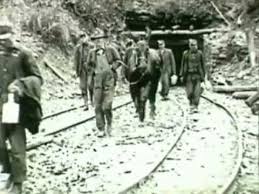 When the health of our environment is compromised, the health of people is too. Often times the same bad actors that exploit our environment also refuse to give workers safe working conditions, living wages, or the right to organize. It is also working class people that occupy the most dangerous jobs and are most impacted by climate catastrophe and environmental disasters produced by exploitive industries. When labor and the environmental movements work together, however, we do more than just provide safer industry jobs. We create new opportunities that secure a future that is both just and climate-stable. Some of these victories are small, some of them are big — but all of them help move us toward a new economy. After all, there are no jobs on a dead planet.
When the health of our environment is compromised, the health of people is too. Often times the same bad actors that exploit our environment also refuse to give workers safe working conditions, living wages, or the right to organize. It is also working class people that occupy the most dangerous jobs and are most impacted by climate catastrophe and environmental disasters produced by exploitive industries. When labor and the environmental movements work together, however, we do more than just provide safer industry jobs. We create new opportunities that secure a future that is both just and climate-stable. Some of these victories are small, some of them are big — but all of them help move us toward a new economy. After all, there are no jobs on a dead planet.
1. Blair Mountain Battle, Then and Now (1921)
The bloody Blair Mountain Battle is a classic story of companies exploiting workers and natural resources. Despite the coal mining company’s control over their entire lives, workers fought back for their right to safe working conditions, living wages, and union recognition. Today, West Virginia residents are fighting coal companies to end mountaintop removal and protect the historical site of the 1921 battle.
2. Donora, Pennsylvania’s Smog Problem (1940)
After factory smog became so thick that it poisoned and killed local residents, workers stood up to corporations that refused to take responsibility. Workers fought for both their own health and the health of their shared environment by taking on corporate bosses.
3. The Creation of the Occupational Safety and Health Administration (1971)
It was long the practice for workers to be exposed to harmful conditions, while at the same time responsible for protecting themselves. The creation of the Occupational Safety and Health Administration (OSHA) was a powerful collaboration between labor unions and environmental activists, attacking chemical industries that were poisoning both people and environments.
4. Los Angeles Forced to Protect Truckers, Reduces Toxic Emissions by 90% (2014)
Deaths on the job, miserable working conditions, and one of the dirtiest ports in the United States were only some of the barriers facing activists fighting to enforce regulations in Los Angeles. Together labor, environmental groups, and public health professionals made change.
5. United Steelworkers Strike Against Big Oil (2015)
Workers in the gas and oil industry are more than six times as likely to die on the job as the average American. The concerns of the families working in the gas and oil industry are the same as those who are living outside “the fenceline:” We can’t keep our families safe when dirty industries thrive
1. The Blair Mountain Battle, Then and Now (1921)
The bloody Blair Mountain Battle is a classic story of companies exploiting workers and natural resources. Despite the coal mining company’s control over their entire lives, workers fought back for their right to safe working conditions, living wages, and union recognition. Today, West Virginia residents are fighting coal companies to end mountaintop removal and protect the historical site of the 1921 battle.
2. Donora, Pennsylvania’s Smog Problem (1940)
After factory smog became so thick that it poisoned and killed local residents, workers stood up to corporations that refused to take responsibility. Workers fought for both their own health and the health of their shared environment by taking on corporate bosses.
3. The Creation of the Occupational Safety and Health Administration (1971)
It was long the practice for workers to be exposed to harmful conditions, while at the same time responsible for protecting themselves. The creation of the Occupational Safety and Health Administration (OSHA) was a powerful collaboration between labor unions and environmental activists, attacking chemical industries that were poisoning both people and environments.
4. Los Angeles Forced to Protect Truckers, Reduces Toxic Emissions by 90% (2014)
Deaths on the job, miserable working conditions, and one of the dirtiest ports in the United States were only some of the barriers facing activists fighting to enforce regulations in Los Angeles. Together labor, environmental groups, and public health professionals made change.
5. United Steelworkers Strike Against Big Oil (2015)
Workers in the gas and oil industry are more than six times as likely to die on the job as the average American. The concerns of the families working in the gas and oil industry are the same as those who are living outside “the fenceline:” We can’t keep our families safe when dirty industries thrive
.